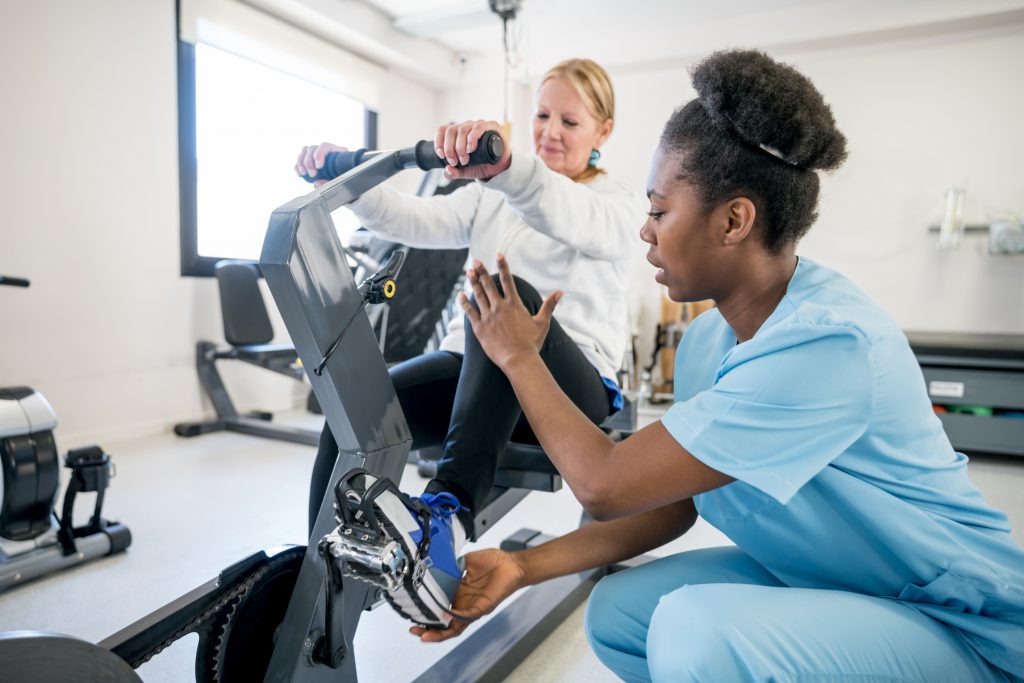 Written By: Ryan Daywalt PT, MPT
Written By: Ryan Daywalt PT, MPT
Rehab. The name alone conjures up all sorts of different connotations for different people. Maybe you or a loved one has been affected by a debilitating disease, stroke, or heart attack? Or maybe the insidious effects of addiction has crept into your lives? Whatever you’re facing, or likely to face, chances are there is a rehab program out there designed to get you through it.
The key principle that most rehab programs hinge upon, is the goal of helping patients achieve the highest degree of independence regardless of their current circumstance. Physical Therapists, Occupational Therapists, and Speech Language Pathologists make up over 700,000 rehab professionals in the United States alone. They can be found in settings ranging from hospitals, to schools, to outpatient clinics. These highly educated professionals often work in conjunction with one another, in order to create an individualized plan of care built to address each patient’s specific needs. Some examples of specialized areas or rehabilitation are as follows:
Recovery from a Traumatic Brain injury
Learning to talk or swallow again following a Stroke
Building strength and endurance after a prolonged illness or hospitalization
Facilitating optimal neurological development in children born with congenital disorders
Helping patients with spinal cord injuries learn new techniques for activities of daily living
National Rehab Awareness Week (September 13-19th) honors these selfless providers for all they do in their communities. They work countless hours helping patients achieve their goals. Through the work of these dedicated professionals, millions of people are able to return to doing the things they love.

So whether you are recovering from an everyday injury, attempting to meet a personal goal, or facing a seemingly insurmountable task of recovery, there will always be rehab professionals there, to shepherd you along that journey!
References:
Virani SS, Alonso A, Benjamin EJ, Bittencourt MS, Callaway CW, Carson AP, Chamberlain AM, Chang AR, Cheng S, Delling FN, Djousse L, Elkind MSV, Ferguson JF, Fornage M, Khan SS, Kissela BM, Knutson KL, Kwan TW, Lackland DT, Lewis TT, Lichtman JH, Longenecker CT, Loop MS, Lutsey PL, Martin SS, Matsushita K, Moran AE, Mussolino ME, Perak AM, Rosamond WD, Roth GA, Sampson UKA, Satou GM, Schroeder EB, Shah SH, Shay CM, Spartano NL, Stokes A, Tirschwell DL, Vanwagner LB, Tsao CW; on behalf of the American Heart Association Council on Epidemiology and Prevention Statistics Committee and Stroke Statistics Subcommittee. Heart disease and stroke statistics- 2020 update: a report from the American Heart Association. Circulation. 2020;141:e1-e458. doi: 10.1161/CIR.0000000000000757.
Bureau of Labor Statistics, U.S. Department of Labor, Occupational Outlook Handbook, Physical Therapists,
on the Internet at https://www.bls.gov/ooh/healthcare/physical-therapists.htm (visited June 15, 2020).
